
How to Use MCP4151-502E/P: Examples, Pinouts, and Specs
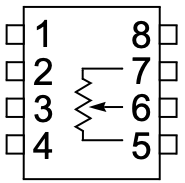
 Design with MCP4151-502E/P in Cirkit Designer
Design with MCP4151-502E/P in Cirkit DesignerIntroduction
The MCP4151-502E/P is a digital potentiometer manufactured by Microchip Technology. It features a 5kΩ resistance value with a 256-position wiper, allowing precise control of resistance in analog circuits. The device is controlled via an SPI (Serial Peripheral Interface) communication protocol, making it easy to integrate with microcontrollers and other digital systems.
Explore Projects Built with MCP4151-502E/P
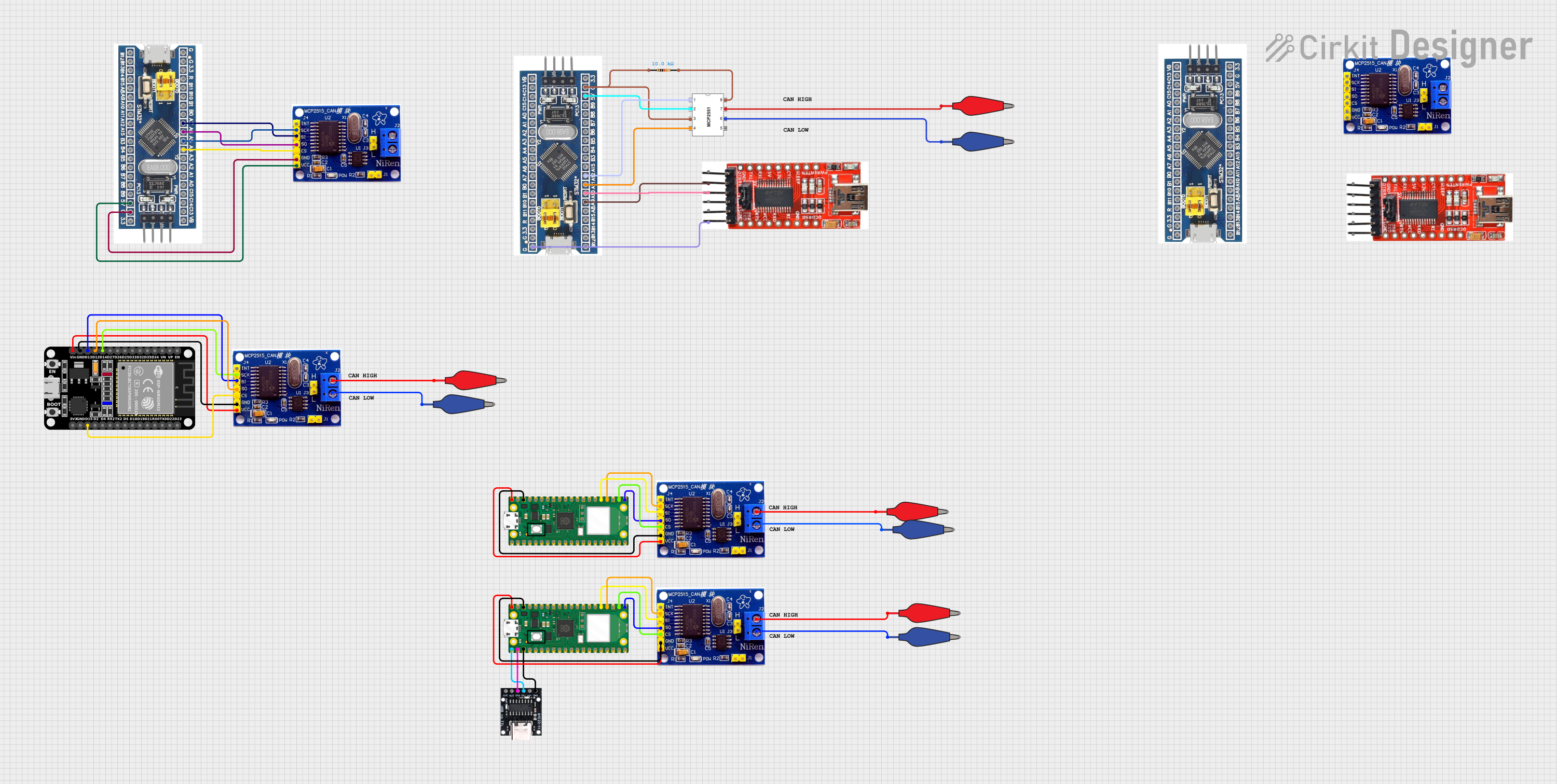
 Open Project in Cirkit Designer
Open Project in Cirkit Designer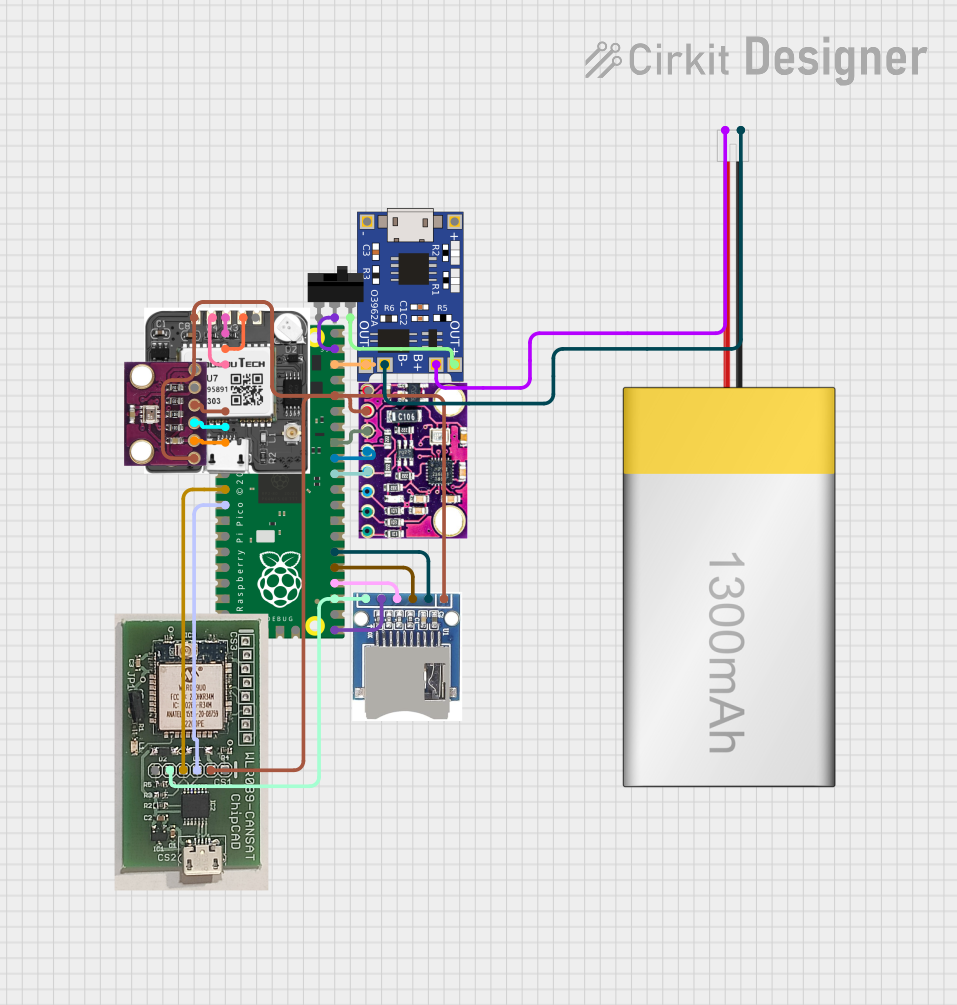
 Open Project in Cirkit Designer
Open Project in Cirkit Designer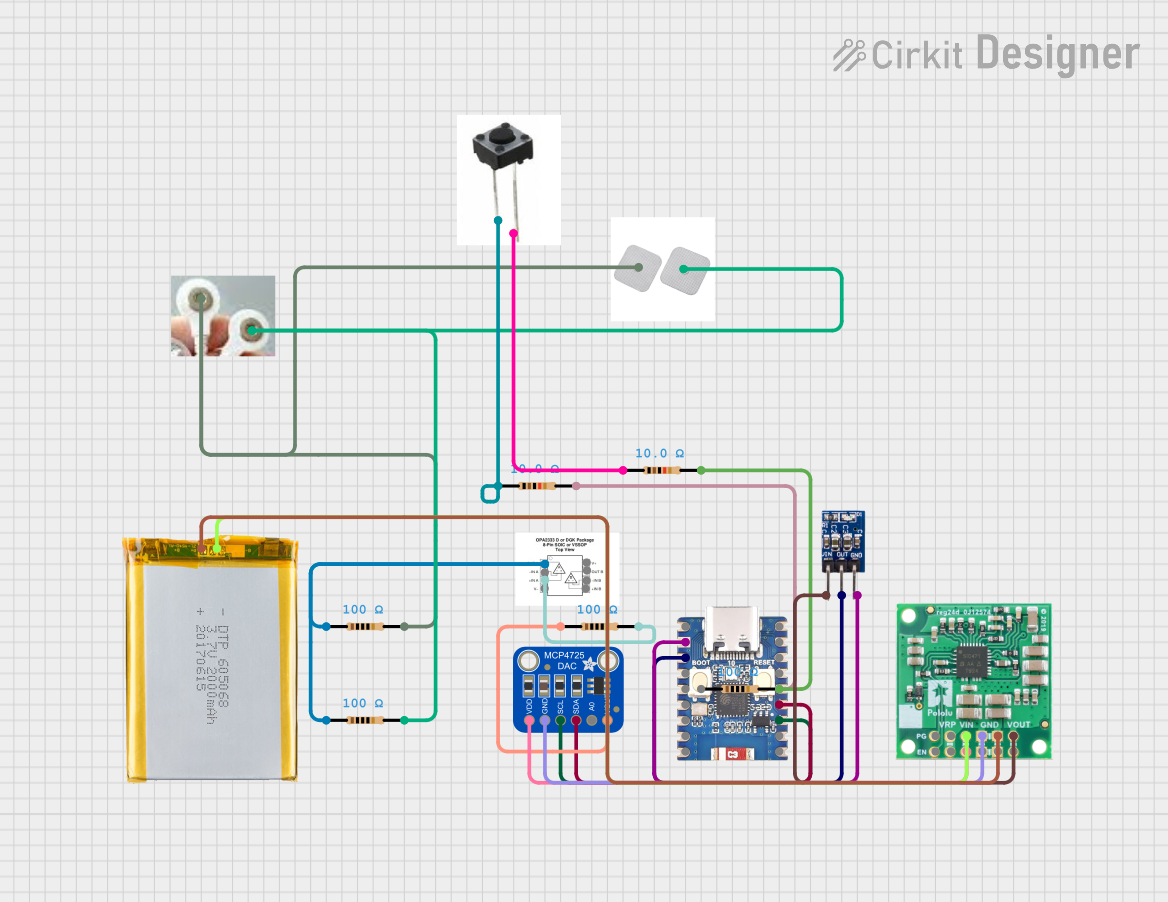
 Open Project in Cirkit Designer
Open Project in Cirkit Designer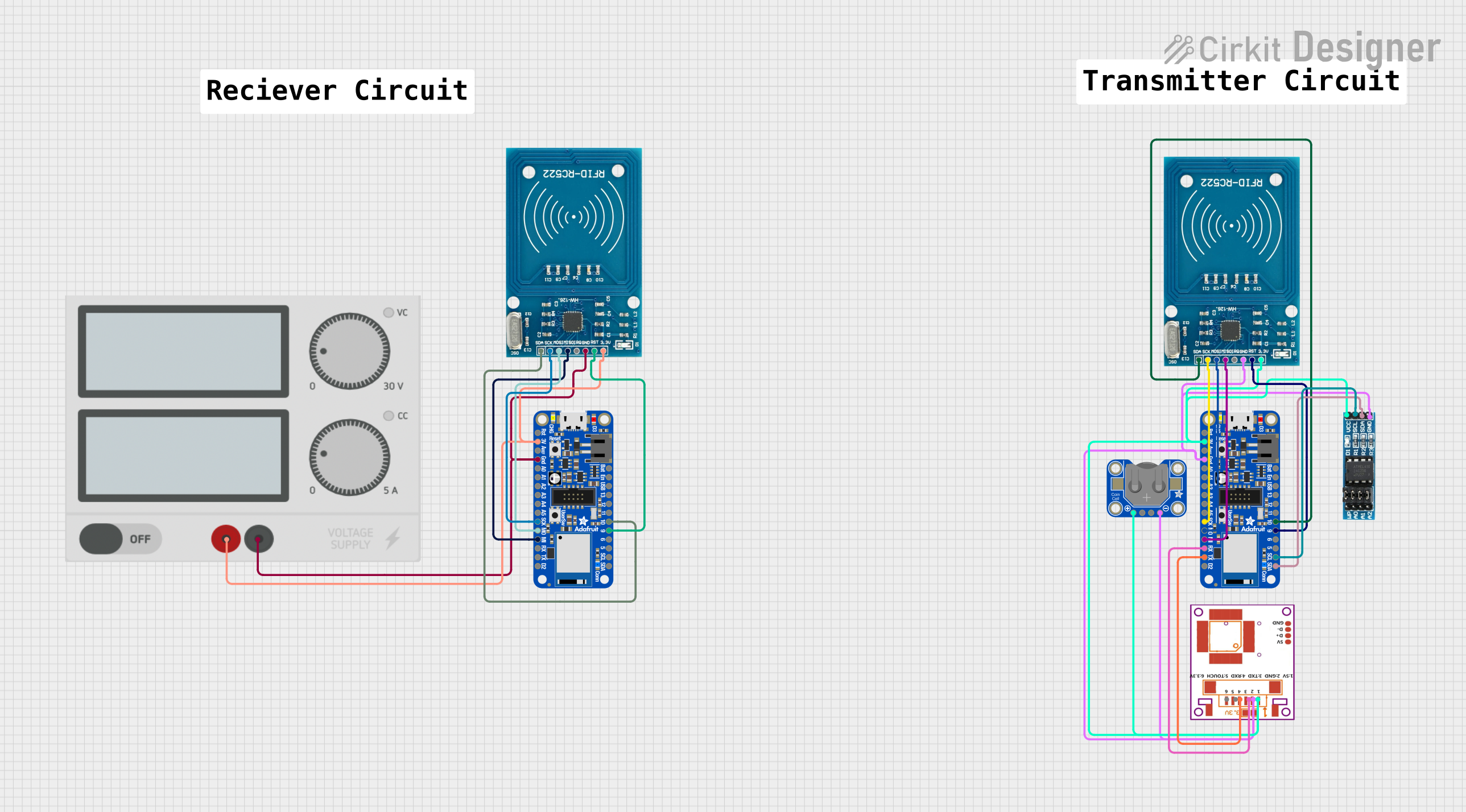
 Open Project in Cirkit Designer
Open Project in Cirkit DesignerExplore Projects Built with MCP4151-502E/P

 Open Project in Cirkit Designer
Open Project in Cirkit Designer
 Open Project in Cirkit Designer
Open Project in Cirkit Designer
 Open Project in Cirkit Designer
Open Project in Cirkit Designer
 Open Project in Cirkit Designer
Open Project in Cirkit DesignerCommon Applications and Use Cases
- Volume control in audio systems
- Adjustable gain in amplifiers
- Calibration and trimming in sensor circuits
- Programmable voltage dividers
- LED dimming and brightness control
- Resistance tuning in test and measurement equipment
Technical Specifications
The following table outlines the key technical details of the MCP4151-502E/P:
| Parameter | Value |
|---|---|
| Resistance Value | 5kΩ |
| Number of Wiper Positions | 256 |
| Communication Interface | SPI |
| Supply Voltage (VDD) | 2.7V to 5.5V |
| Wiper Resistance (Typical) | 75Ω |
| Operating Temperature Range | -40°C to +125°C |
| End-to-End Resistance Tolerance | ±20% |
| Maximum Current (through resistor) | ±2.5mA |
| Package Type | PDIP-8 |
Pin Configuration and Descriptions
The MCP4151-502E/P is available in an 8-pin PDIP package. The pinout and descriptions are as follows:
| Pin Number | Pin Name | Description |
|---|---|---|
| 1 | CS | Chip Select (Active Low). Enables SPI communication when pulled low. |
| 2 | SCK | Serial Clock Input. Used to synchronize data transfer in SPI communication. |
| 3 | SI | Serial Data Input. Receives data from the microcontroller. |
| 4 | VSS | Ground (0V reference). |
| 5 | PW0 | Terminal 0 of the potentiometer. |
| 6 | PW1 | Terminal 1 of the potentiometer. |
| 7 | VW | Wiper terminal. Provides the adjustable resistance output. |
| 8 | VDD | Positive supply voltage (2.7V to 5.5V). |
Usage Instructions
How to Use the MCP4151-502E/P in a Circuit
- Power Supply: Connect the VDD pin to a stable power source (2.7V to 5.5V) and the VSS pin to ground.
- SPI Connections:
- Connect the CS, SCK, and SI pins to the corresponding SPI pins on your microcontroller.
- Ensure proper pull-up or pull-down resistors if required by your system.
- Potentiometer Terminals:
- Connect PW0 and PW1 to the circuit where the resistance is needed.
- The adjustable resistance is available between VW (wiper) and either PW0 or PW1.
- SPI Communication:
- Use SPI commands to set the wiper position (0 to 255). Each step corresponds to approximately 19.6Ω (5kΩ ÷ 256).
Important Considerations and Best Practices
- Power Supply Stability: Ensure a clean and stable power supply to avoid noise in the resistance adjustment.
- Wiper Current: Avoid exceeding the maximum wiper current of ±2.5mA to prevent damage to the device.
- SPI Timing: Follow the SPI timing requirements specified in the datasheet for reliable communication.
- Unused Pins: Leave unused potentiometer terminals (PW0 or PW1) floating if not connected in the circuit.
Example: Using MCP4151-502E/P with Arduino UNO
Below is an example of how to control the MCP4151-502E/P using an Arduino UNO:
#include <SPI.h>
// Define SPI pins for MCP4151
const int CS_PIN = 10; // Chip Select pin connected to Arduino pin 10
void setup() {
pinMode(CS_PIN, OUTPUT); // Set CS pin as output
digitalWrite(CS_PIN, HIGH); // Set CS pin high (inactive)
SPI.begin(); // Initialize SPI communication
SPI.setClockDivider(SPI_CLOCK_DIV16); // Set SPI clock speed
SPI.setDataMode(SPI_MODE0); // Set SPI mode (Mode 0)
}
void loop() {
setWiperPosition(128); // Set wiper to mid-position (50% of 5kΩ)
delay(1000); // Wait for 1 second
setWiperPosition(255); // Set wiper to maximum position (5kΩ)
delay(1000); // Wait for 1 second
}
// Function to set the wiper position (0 to 255)
void setWiperPosition(byte position) {
digitalWrite(CS_PIN, LOW); // Activate the MCP4151 by pulling CS low
SPI.transfer(0x00); // Send command byte (write to wiper register)
SPI.transfer(position); // Send the wiper position (0-255)
digitalWrite(CS_PIN, HIGH); // Deactivate the MCP4151 by pulling CS high
}
Notes:
- The
setWiperPositionfunction sends two bytes over SPI: a command byte and the wiper position. - Adjust the
CS_PINdefinition if using a different pin for Chip Select.
Troubleshooting and FAQs
Common Issues and Solutions
No Response from MCP4151:
- Ensure the CS pin is pulled low during SPI communication.
- Verify the SPI clock speed and mode match the MCP4151 requirements.
Incorrect Resistance Output:
- Check the wiper position value being sent (0 to 255).
- Verify the connections to the potentiometer terminals (PW0, PW1, and VW).
Device Overheating:
- Ensure the wiper current does not exceed ±2.5mA.
- Verify the supply voltage is within the 2.7V to 5.5V range.
SPI Communication Errors:
- Check for loose or incorrect connections between the microcontroller and MCP4151.
- Ensure proper grounding between all components in the circuit.
FAQs
Q: Can the MCP4151-502E/P be used with 3.3V systems?
A: Yes, the MCP4151 operates with supply voltages as low as 2.7V, making it compatible with 3.3V systems.
Q: What happens if the wiper current exceeds the maximum rating?
A: Exceeding the maximum wiper current of ±2.5mA can damage the internal circuitry of the MCP4151.
Q: Can I use the MCP4151 to control AC signals?
A: The MCP4151 is designed for DC applications. Using it with AC signals may result in unpredictable behavior or damage.
Q: How precise is the resistance adjustment?
A: The MCP4151 provides 256 discrete wiper positions, with each step corresponding to approximately 19.6Ω for the 5kΩ version.